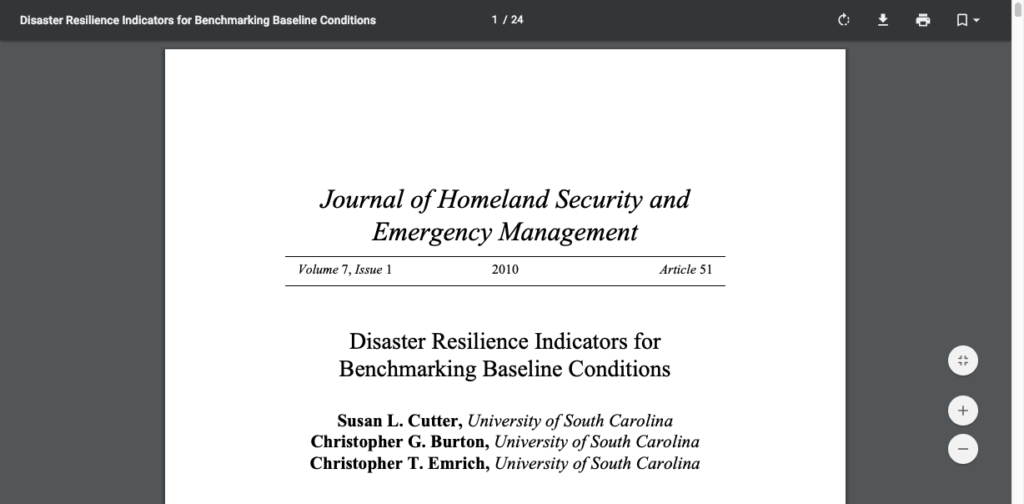There is considerable federal interest in disaster resilience as a mechanism for mitigating the impacts to local communities, yet the identification of metrics and standards for measuring resilience remain a challenge. This paper provides a methodology and a set of indicators for measuring baseline characteristics of communities that foster resilience. By establishing baseline conditions, it becomes possible to monitor changes in resilience over time in particular places and to compare one place to another. We apply our methodology to counties within the Southeastern United States as a proof of concept. The results show that spatial variations in disaster resilience exist and are especially evident in the rural/urban divide, where metropolitan areas have higher levels of resilience than rural counties. However, the individual drivers of the disaster resilience (or lack thereof)—social, economic, institutional, infrastructure, and community capacities—vary widely.
